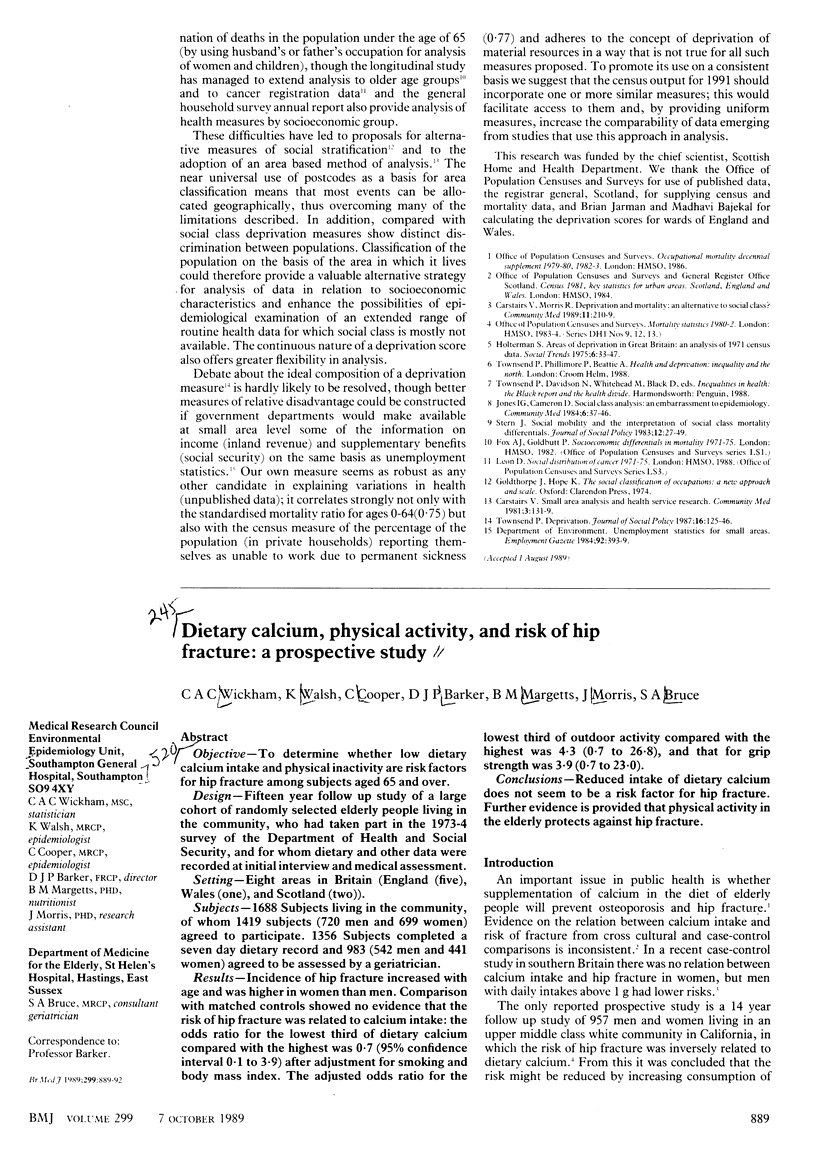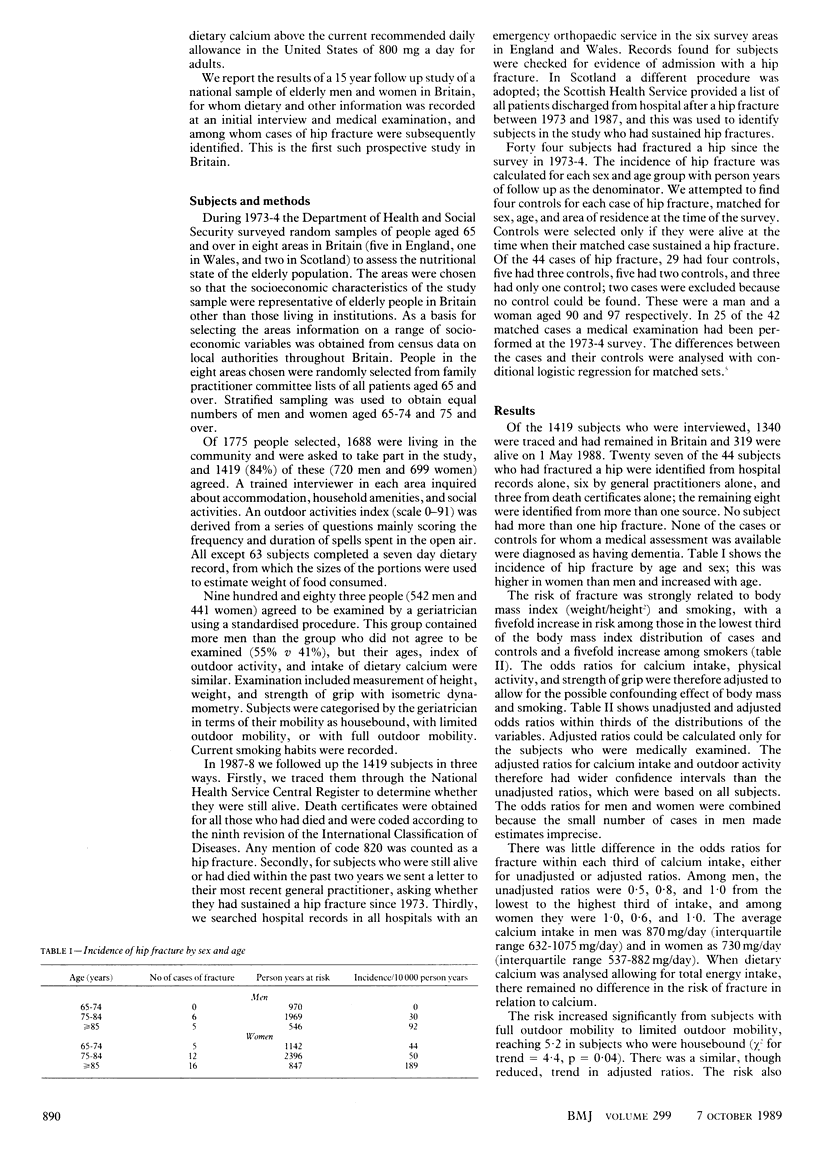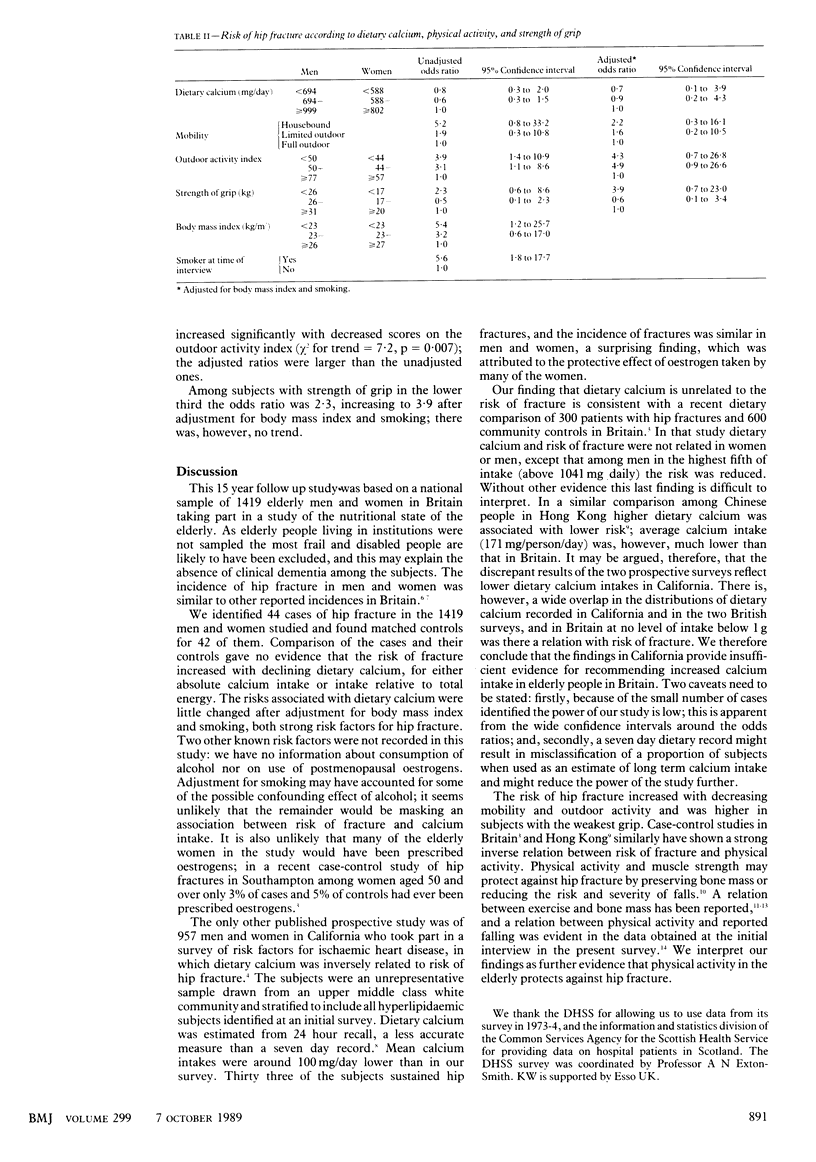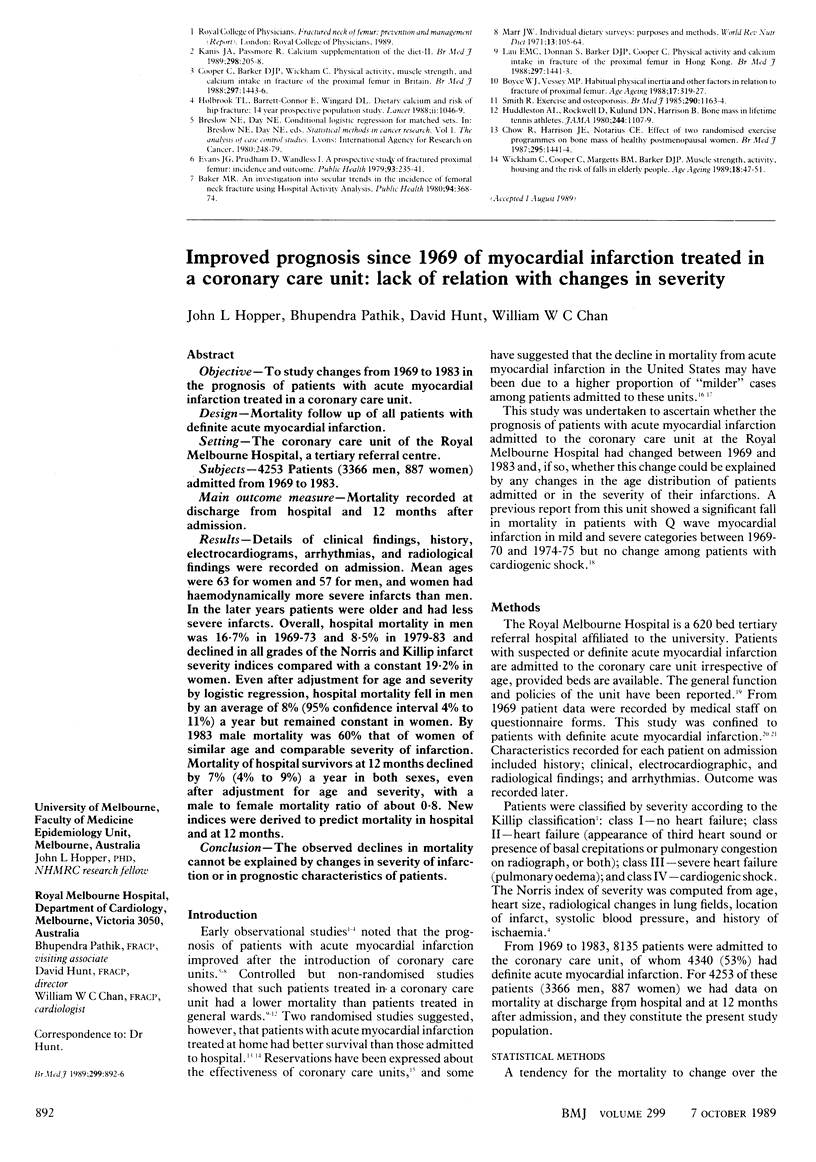Abstract
OBJECTIVE--To determine whether low dietary calcium intake and physical inactivity are risk factors for hip fracture among subjects aged 65 and over. DESIGN--Fifteen year follow up study of a large cohort of randomly selected elderly people living in the community, who had taken part in the 1973-4 survey of the Department of Health and Social Security, and for whom dietary and other data were recorded at initial interview and medical assessment. SETTING--Eight areas in Britain (England (five), Wales (one), and Scotland (two]. SUBJECTS--1688 Subjects living in the community, of whom 1419 subjects (720 men and 699 women) agreed to participate. 1356 Subjects completed a seven day dietary record and 983 (542 men and 441 women) agreed to be assessed by a geriatrician. RESULTS--Incidence of hip fracture increased with age and was higher in women than men. Comparison with matched controls showed no evidence that the risk of hip fracture was related to calcium intake: the odds ratio for the lowest third of dietary calcium compared with the highest was 0.7 (95% confidence interval 0.1 to 3.9) after adjustment for smoking and body mass index. The adjusted odds ratio for the lowest third of outdoor activity compared with the highest was 4.3 (0.7 to 26.8), and that for grip strength was 3.9 (0.7 to 23.0). CONCLUSIONS--Reduced intake of dietary calcium does not seem to be a risk factor for hip fracture. Further evidence is provided that physical activity in the elderly protects against hip fracture.
Full text
PDF



Selected References
These references are in PubMed. This may not be the complete list of references from this article.
- Baker M. R. An investigation into secular trends in the incidence of femoral neck fracture using hospital activity analysis. Public Health. 1980 Nov;94(6):368–374. doi: 10.1016/s0033-3506(80)80140-5. [DOI] [PubMed] [Google Scholar]
- Boyce W. J., Vessey M. P. Habitual physical inertia and other factors in relation to risk of fracture of the proximal femur. Age Ageing. 1988 Sep;17(5):319–327. doi: 10.1093/ageing/17.5.319. [DOI] [PubMed] [Google Scholar]
- Chow R., Harrison J. E., Notarius C. Effect of two randomised exercise programmes on bone mass of healthy postmenopausal women. Br Med J (Clin Res Ed) 1987 Dec 5;295(6611):1441–1444. doi: 10.1136/bmj.295.6611.1441. [DOI] [PMC free article] [PubMed] [Google Scholar]
- Cooper C., Barker D. J., Wickham C. Physical activity, muscle strength, and calcium intake in fracture of the proximal femur in Britain. BMJ. 1988 Dec 3;297(6661):1443–1446. doi: 10.1136/bmj.297.6661.1443. [DOI] [PMC free article] [PubMed] [Google Scholar]
- Evans J. G., Prudham D., Wandless I. A prospective study of fractured proximal femur: incidence and outcome. Public Health. 1979 Jul;93(4):235–241. doi: 10.1016/s0033-3506(79)80036-0. [DOI] [PubMed] [Google Scholar]
- Holbrook T. L., Barrett-Connor E., Wingard D. L. Dietary calcium and risk of hip fracture: 14-year prospective population study. Lancet. 1988 Nov 5;2(8619):1046–1049. doi: 10.1016/s0140-6736(88)90065-7. [DOI] [PubMed] [Google Scholar]
- Huddleston A. L., Rockwell D., Kulund D. N., Harrison R. B. Bone mass in lifetime tennis athletes. JAMA. 1980 Sep 5;244(10):1107–1109. [PubMed] [Google Scholar]
- Lau E., Donnan S., Barker D. J., Cooper C. Physical activity and calcium intake in fracture of the proximal femur in Hong Kong. BMJ. 1988 Dec 3;297(6661):1441–1443. doi: 10.1136/bmj.297.6661.1441. [DOI] [PMC free article] [PubMed] [Google Scholar]
- Marr J. W. Individual dietary surveys: purposes and methods. World Rev Nutr Diet. 1971;13:105–164. doi: 10.1159/000391884. [DOI] [PubMed] [Google Scholar]
- Wickham C., Cooper C., Margetts B. M., Barker D. J. Muscle strength, activity, housing and the risk of falls in elderly people. Age Ageing. 1989 Jan;18(1):47–51. doi: 10.1093/ageing/18.1.47. [DOI] [PubMed] [Google Scholar]


